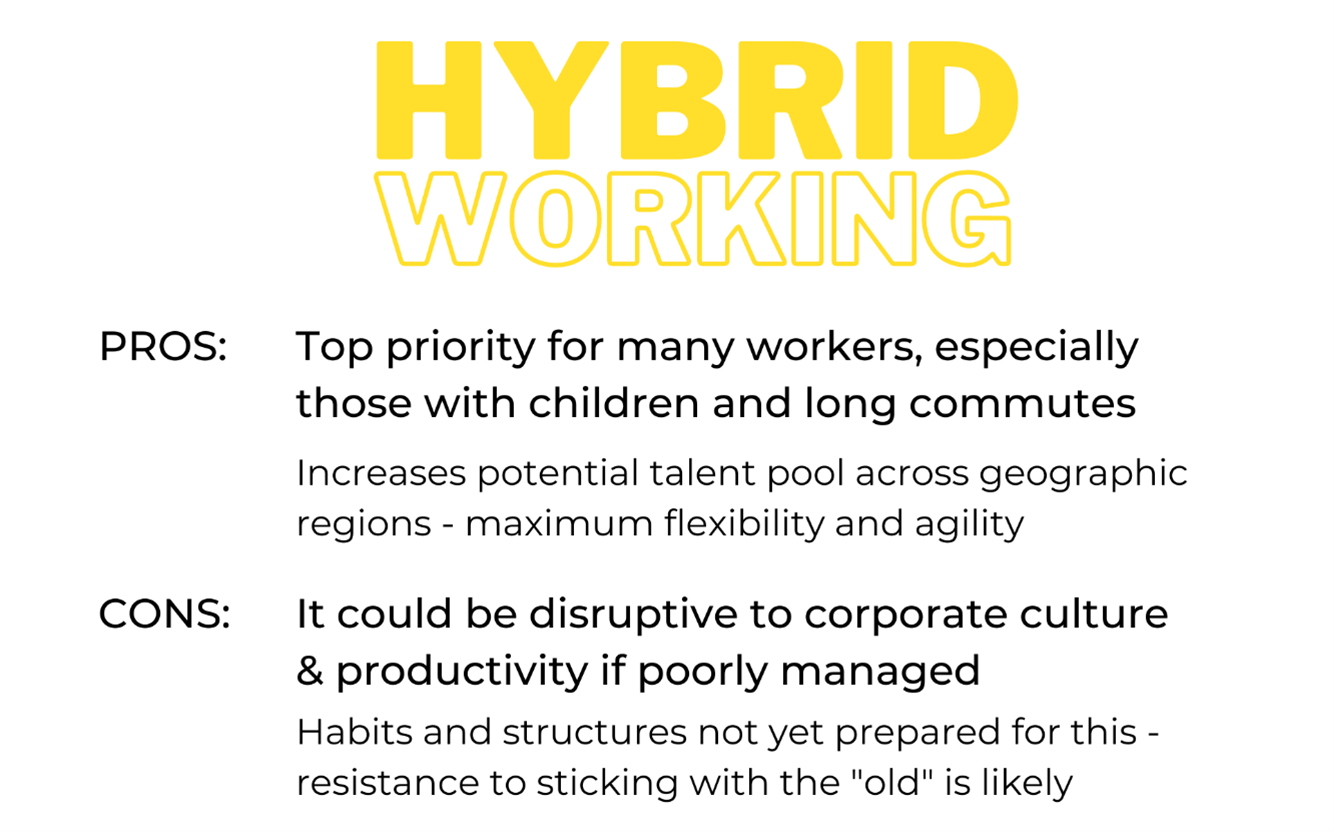
The Downside of Hybrid Meetings
Sep 01, 2021The day when employees return to the office is getting closer and closer. In recent days and weeks, there have been many discussions about the future split of office and remote work. Should it be 2, 3 or 4 days, mandatory or voluntary? What is desired by managers and what by employees? In some cases, expectations diverge and in others, the workforce is united. There will not be a standard and "right" solution for this - no one size fits all.
The key question is, what are the consequences with this decision? What does it mean if we mandate a certain number or certain days as "this is how it has to be"? If we are too rigid, will we lose top performers because other organizations promise more flexibility? If we take too lose an approach, will we lose sight of the big picture and will it harm our productivity?
This is not an easy task that many companies are currently facing. While we are keeping ourselves busy with this discussion, we are overlooking an important fact:
Whether we will be spending two or four
days in the office - HYBRID MEETINGS –
have already become part of our daily work.
What are the side effects of hybrid meetings? Are we prepared for them? Many are concerned with the question of whether they are technically equipped for this. How do we design our offices? Important! Do our employees have the necessary equipment at home? Just as crucial and important! Because without conducive structures, we lose a lot of time, energy and money.
In addition to the necessary technical implementations, have we considered measures to mitigate the negative effects? What are possible side effects and invisible long-term consequences of hybrid meetings?
The question that concerns me, however, relates to the less obvious hurdles. As a behavior designer, I can't help but think of different scenarios. Obstacles that we unconsciously create through structures and processes are often overlooked in the rush and zeal of good ideas.
If we are aware and understand how people think, feel and act, we can already imagine what this will mean in our organizations. But above all, how do you make the decision on which meeting format to introduce in the future and how many days make sense? Probably like all other humans: emotionally.
But this is a really important decision, the possible consequences of which should be weighed very carefully. Only then make your decision so that you also include the strategic and long-term perspective.

What can you do to mitigate the cons so you can advance the pros for your organization and workforce?
Consider how people unconsciously feel, think and act:
1. Status Quo Preference
Status quo bias is an emotional bias; a preference for the current state of affairs. The current baseline situation is taken as a point of reference, and any change from that baseline situation is perceived as a loss. In other words, people want things to stay the way they are.
2. Distance Effect - out of sight out of mind
We overvalue things that are closer to us - this can lead to distorted decisions in times of hybrid meetings. Leaders should therefore be aware that the proximity factor can have an unnoticed influence on the perception and evaluation of their employees. Pay attention to this when making personnel decisions, assigning tasks or development opportunities.
3. Similar to Me Preference
We prefer people who are similar to us. We unconsciously look for the familiar because it gives us a sense of security. Thus we unconsciously exclude people who are different or think differently than we do. Do you also prefer people who are hardworking like you? People you can rely on, who are always available and tangible? You already see what I'm getting at?
4. Confirmation Bias
Confirmation bias is the tendency to select, determine and interpret information in such a way that it corresponds to one's own expectations. In the process, information that could refute one's own expectations is blanked out, so that one succumbs to self-deception. How might this play out unconsciously?
"People who come into the office must love their job more than others." Thus, unconsciously stored is that people who work from home have different priorities and don't do their job as well.
Don't leave the design of your corporate culture to chance.
Plan and design it carefully and thoughtfully.
Build a digital meeting culture AND empower your leaders to venture beyond the familiar. When you understand how your team feels, thinks and acts, you can celebrate success with each other across national borders and boundaries in our minds.
💡The Digital Meeting Culture program supports leaders to simply design better meetings through behavioral. Digital Meeting Culture
💡You don't really know your team's strengths or haven't had a chance to really get to know them? With the Uniqueness Discovery Program you can use the different strengths perfectly in your daily work. Without misunderstandings.
SHARE POST:

Sabine Caliskan
CEO of ParP - PeopleAtRightPlace
Sabine CALISKAN is an award-winning behavioral architect for Leadership & Organizational Culture and Managing Director of ParP - PeopleAtRightPlace.
Together with her team of experts, she supports organizations and leaders to establish conducive behavior that leads to desired results.



